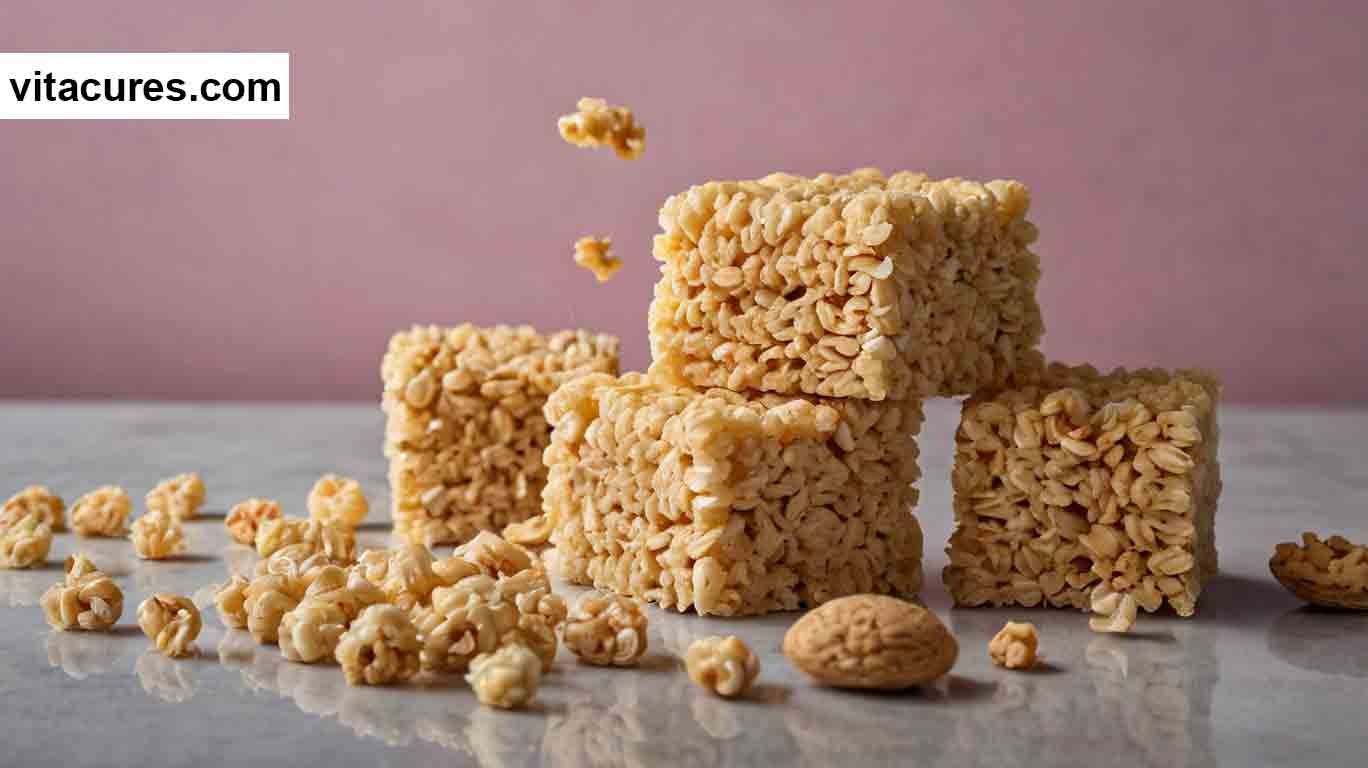If you’ve ever wondered whether Rice Krispies are gluten-free, you’re not alone. For anyone navigating the grocery aisles with a gluten sensitivity or celiac disease, understanding what’s safe to eat can feel overwhelming.
You might think that something as simple as a breakfast cereal is an easy choice, but the reality can be more complex. Imagine waking up to a bowl of Rice Krispies with peace of mind, knowing exactly what you’re putting into your body.
We’ll dig into the ingredients that make up Rice Krispies and whether they fit into your gluten-free lifestyle. Stick around, because the answer might surprise you and change the way you start your mornings.

What Are Rice Krispies?
Rice Krispies are a popular breakfast cereal enjoyed worldwide. Known for their distinctive “snap, crackle, and pop” sound when milk is added, they bring joy to many breakfast tables. Made primarily from rice, these crunchy, airy pieces are a staple in many households.
First introduced by Kellogg’s, Rice Krispies quickly became a favorite. They are not only enjoyed as cereal but also used in various dessert recipes. This cereal’s simple ingredients make it a versatile option for many.
Ingredients Breakdown
Rice Krispies contain a few key ingredients. The main component is milled rice. This forms the base of the cereal. Sugar is added for sweetness, giving it a light, pleasant taste. Salt enhances the flavor profile, ensuring a balanced taste experience.
Barley malt extract is included as a flavoring agent. This ingredient can pose concerns for those avoiding gluten. Finally, vitamins and minerals fortify the cereal, making it a nutritious choice for breakfast.
Manufacturing Process
The manufacturing process of Rice Krispies is straightforward. It starts with rice grains being cooked until soft. The cooked rice is then shaped and toasted. This process gives Rice Krispies their signature crispiness.
The cereal is then dried to achieve the desired texture. This step is crucial for maintaining the cereal’s crunchiness. Once dried, the cereal is coated with vitamins and minerals. This ensures a nutritious breakfast option for consumers.
Gluten In Food Products
Gluten is a protein found in many grains. It can be troublesome for those with gluten sensitivities or celiac disease. Knowing where gluten hides in food products is crucial. Especially for those looking to maintain a gluten-free diet.
Understanding Gluten
Gluten gives elasticity to dough. It helps bread rise and keeps its shape. Found in grains like wheat, barley, and rye. For some, gluten triggers health issues. This is why knowing its presence in foods is vital.
Common Sources Of Gluten
Wheat is the most common source. It’s in bread, pasta, and cereals. Barley is another source, often found in beer and malted products. Rye is less common but still a gluten grain. Many processed foods may contain hidden gluten. This includes soups, sauces, and snacks.
Rice Krispies And Gluten Content
Rice Krispies are often thought to be gluten-free, but traditional recipes contain malt flavoring, which has gluten. People with gluten sensitivity should check labels carefully before consuming, as some brands offer gluten-free versions. Always read packaging to ensure safe consumption.
Rice Krispies have been a breakfast staple for generations, loved for their crispy texture and versatile uses. But if you or someone in your family is gluten-sensitive, you might be wondering: Are Rice Krispies safe to eat? Understanding the gluten content in Rice Krispies is crucial for making informed dietary choices. Let’s delve into the specifics, starting with their original ingredients and then exploring gluten-free variants.
Original Rice Krispies Ingredients
The classic Rice Krispies are made from a few simple ingredients. Rice, sugar, salt, and some flavoring agents make up the bulk of the cereal. The crunch you love comes mainly from the rice. However, there’s an important ingredient you need to be aware of—malt flavoring. Malt is derived from barley, which contains gluten. So, the original Rice Krispies are not gluten-free.
Have you ever picked up a box, only to put it back because of that single ingredient? This is a common dilemma for those who need to avoid gluten. Knowing what’s in your cereal can save you from accidental exposure.
Gluten-free Variants
Luckily, there are alternatives. Several brands offer gluten-free versions of crispy rice cereal. These variants typically replace malt flavoring with safe substitutes, ensuring you can enjoy your breakfast without worry.
Have you tried looking for these gluten-free options? They might not be as easy to find as the original, but they are worth the search. You can explore health food stores or online shopping platforms for more choices.
Do you miss the snap, crackle, and pop in your gluten-free diet? With these gluten-free versions, you can bring back those familiar sounds and enjoy your favorite cereal once again. Making informed choices allows you to safely savor the foods you love.
Are you ready to explore these gluten-free options for your next breakfast?
Cross-contamination Risks
Rice Krispies are not always gluten-free due to potential cross-contamination during production. Rice itself is gluten-free, but shared facilities with gluten-containing products can pose risks. Always check labels for gluten-free certifications to ensure safety for those with gluten sensitivities.
Understanding cross-contamination risks is crucial for anyone with gluten sensitivity or celiac disease. When you think of Rice Krispies, you might assume they’re naturally gluten-free. After all, rice is a gluten-free grain. However, the manufacturing process can introduce gluten through cross-contamination. This can make a seemingly safe cereal a risky choice. But how does this happen, and what should you watch out for?
Production Facilities
Production facilities are the heart of the issue. Many cereals, including Rice Krispies, are produced in facilities that also handle gluten-containing grains. Picture a conveyor belt moving both cornflakes and wheat cereal. Even a tiny bit of wheat residue can end up in your rice cereal. This is enough to trigger gluten-related symptoms in sensitive individuals.
Have you ever wondered how companies manage this? They might clean equipment between production runs, but some traces can remain. It’s like trying to wash a mixing bowl that was just used for cake batter. You might miss a spot, and that spot matters when gluten is involved.
Packaging And Labeling
Packaging and labeling are your best friends in navigating this. Companies are increasingly transparent about potential cross-contamination. Look for labels indicating a product is made in a gluten-free facility. If it’s not explicitly labeled gluten-free, there’s a chance of gluten presence.
Think of your last grocery trip. You likely saw terms like “may contain traces of wheat” on labels. This isn’t just legal jargon—it’s a warning. It’s there to guide you in making informed choices. Would you feel comfortable gambling with your health based on vague packaging claims?
When choosing a cereal, taking a moment to read the packaging could save you from unwanted symptoms. Always check if there’s a gluten-free certification. This little step can be a game-changer in your gluten-free journey.
In the world of gluten-free eating, vigilance is key. Do you have any experiences where cross-contamination caught you by surprise? Sharing these stories can help others avoid similar pitfalls.
Alternatives To Rice Krispies
For those avoiding gluten, Rice Krispies can be a challenge. Although some brands offer gluten-free versions, alternatives are often more suitable. Explore these delicious options that cater to gluten-free diets.
Gluten-free Cereal Options
Many cereals today cater to gluten-free needs. Corn flakes are a popular choice and widely available. Made from corn, they provide a crispy texture similar to Rice Krispies. Another option is puffed rice cereals labeled gluten-free. These are safe and satisfy the craving for crunch.
Quinoa puffs offer another alternative. Packed with nutrients, they are both healthy and tasty. Look for cereals made from millet or buckwheat. These grains are naturally gluten-free and provide a unique flavor.
Homemade Recipes
Creating your own gluten-free cereal is rewarding. Mix your favorite gluten-free grains for a personalized blend. Combine oats with nuts and seeds for a hearty mix. Roasting the mix enhances flavor and adds crunch.
Consider making quinoa or amaranth puffs at home. These can be a fun and engaging kitchen activity. Toast them in the oven or on the stove for best results. You can also add spices or a touch of honey for sweetness.
Homemade cereals allow you to control the ingredients. You know exactly what goes into your breakfast bowl. This makes it easy to avoid gluten and enjoy a tasty meal.
Consumer Reviews And Experiences
Consumer reviews and experiences offer a real-world perspective on the gluten-free status of Rice Krispies. People who choose gluten-free products have unique insights and anecdotes that can help you make informed decisions. Are Rice Krispies truly gluten-free? Let’s dive into what consumers have to say.
Feedback From Gluten-sensitive Individuals
Many gluten-sensitive individuals have shared their experiences with Rice Krispies. Jane, a mother of two gluten-sensitive kids, found herself scrutinizing food labels more than ever. She discovered that while traditional Rice Krispies contain barley malt, which has gluten, she opted for gluten-free alternatives like brown rice-based cereals. This shift helped her family enjoy their breakfast without worry.
Others have shared similar stories, emphasizing the importance of checking labels. A user on a popular forum mentioned how they mistakenly assumed Rice Krispies were gluten-free, leading to digestive discomfort. These experiences highlight the need for vigilance when selecting products for gluten-sensitive diets.
Popular Opinions
Across social media and online reviews, opinions about Rice Krispies vary. Some consumers appreciate the crisp texture and nostalgic taste, expressing disappointment that they can’t enjoy the original version due to gluten concerns. However, many celebrate the availability of gluten-free alternatives, noting how these options preserve the beloved crunch without the gluten.
One popular opinion emphasizes the importance of brand transparency. Consumers appreciate when brands clearly label their products as gluten-free, making their shopping experience smoother and safer. This transparency builds trust and loyalty among gluten-sensitive customers.
Have you ever faced a similar dilemma with your favorite food? It’s crucial to weigh consumer reviews and experiences when navigating gluten-free choices. This can guide you to safer, enjoyable options that align with your dietary needs.
Expert Opinions
Rice Krispies are a popular breakfast choice. Many wonder about their gluten content. Gluten can trigger health issues for sensitive individuals. Understanding expert views on Rice Krispies helps consumers make informed choices.
Dietitians’ Views
Dietitians often discuss gluten in foods. They examine ingredients closely. Rice Krispies contain malt flavoring. Malt is usually made from barley. Barley contains gluten, making Rice Krispies unsuitable for gluten-free diets.
Dietitians recommend checking labels. Some brands may offer gluten-free versions. Consumers should verify the product’s gluten status before purchasing. Consulting a dietitian can provide personalized advice.
Research Insights
Research provides clarity on gluten presence in cereals. Studies show malt flavoring in Rice Krispies contains gluten. This is due to barley’s role in malt production. Gluten-sensitive individuals should be cautious.
Researchers focus on alternative ingredients. They explore gluten-free grains for cereal production. Such innovations aim to cater to gluten-free diets. Keeping informed about research developments benefits consumers.
Read more our previous post for: Iop for Depression / Rehab for Depression / Depression Treatment Centers / Depression Recovery Centers / PCOS Vegan Diet / 2-Week Liquid Diet Menu / Best Elemental Diet Powder / Diet Dr Destin / Tretinoin And Vitamin C / Ace Medicare Supplement / Vitamin Packs for Women / Naomi Supplements / Supplement Funnel / Be a Better Mom / Stress Leave at Work / Hair loss is Genetic Or Stress / Stress Leave / Does Homework Cause Stress / Hema Contact Lens / Dr Contact Lens Promo Code / Marlo Contact Lens / trust issues / Mini Tummy Tuck / Newborn Baby Weight / 16-Week Ultrasound / Diabetes Care for Early stage / Metformin for Diabetes / Mattress for Arthritis / Affordable Healthcare / U.S. Healthcare / Sleep Deprived / Endometriosis Surgery Recovery Time
you can check: Fertility Calculator / BMI Calculator / BMR Calculator / Health Risks Calculator / Mental Health Hospital Quotes on Mental Health / Vanicream Vitamin C / Plastic Surgery Center / Vitamin D3 for Sexually
Read More: Ashwagandha Can Make You Horny / Vaginal Pump / Omron Blood Pressure / Vitamin C in Daily / vitamin D deficiency / magic wash laundromat / amphound / pixelxoom / cake ideas
Read More: vaginal depth / Vaginal Pump / Vaginal Cuff / Vaginal Dryness / Tighten Your Vagina / Sore Penis After Sex / Nicotine and Your Sex Drive / Why am I so horny? / Sexual Battery
Read more: 8 oz Chicken Breast / Sea Moss Gel / V8 Energy Drinks / 3 eggs calories / Eating Masago
Conclusion
Rice Krispies can be tricky for gluten-free diets. Some versions contain malt flavoring. This means they have gluten. Always check the label for ingredients. Look for gluten-free options. Some brands offer safe alternatives. Eating gluten-free can be simple. Just stay informed and choose wisely.
Understanding labels is key. Enjoy your cereal without worry. Remember, knowledge helps make better choices. Stay safe and enjoy your breakfast.



